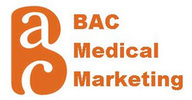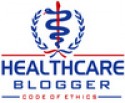The work of the IWA and Marx is increasingly relevant to the practice of medicine today, largely because of the rapidly shrinking percentage of US physicians who own their own practices. This moves physicians into the category of what Marx and his associates called, “working people.” According to data from the American Medical Association, in 1983 76% of physicians were self-employed, a number that had fallen in 2012 to 53%. And the trend is accelerating. It is estimated that in 2014, 3 in 4 newly hired physicians will go to work for hospitals and health systems.
To put this change in Marx’s terms, the rapid fall in physician self-employment means that a shrinking percentage of physicians own what he called the means of production. In his view, this alienates workers – in this case physicians – from other physicians, themselves, the work they do, and from patients. Whether we agree with Marx on every point, his writings on this topic provides a provocative perspective from which to survey the changing landscape of contemporary medicine.
As applied to medicine, the first form of alienation Marx highlights takes place between members of the medical profession itself. When physicians are paid by someone else, working in someone else’s facility and using someone else’s equipment, they begin functioning more and more as instruments of production, like workers on an assembly line. Before long, many tend to see each other largely as commercial competitors, overlooking any mutual professional interests they might otherwise share in common.
When fewer and fewer physicians are self-employed, those who employ them often begin to treat them like any other commodities that can be traded in a competitive market. When employers talk about hiring, they may do so in terms of FTEs (full-time equivalents), as though physicians were just undifferentiated units of labor. On more than one occasion, I have heard executives talk about the number of physician “bodies” they will need to adequately staff a facility.
The second form of alienation Marx predicted occurs within physicians themselves. Physicians are not just units of work – they are also human beings. When physicians are self-employed, they enjoy many opportunities to find personal fulfillment by helping their patients and communities from their own volition. Once they become employed, however, they often become objectified, merely carrying out tasks prescribed to them by someone else.
As a result, employed physicians find themselves spending less and less time thinking about the choices they can make to serve their patients and community, instead simply carrying out – and often resenting – the demands of those they work for. For example, when quality initiatives are imposed on physicians by employers and payers, the pursuit of quality may take on the character of an external demand, as opposed to something physicians freely choose because they believe in it.
A third form of alienation takes place between the worker and the act of working. As physicians lose control of the means of production, both physicians and the work they do often becomes commoditized. Decisions about what patients to care for, how to care for them, whose aid to seek in doing so, where such care should be provided, and how to determine the quality of the care delivered all tend to shift from the physician to the physician’s employer.
As the evaluation of physicians’ work becomes increasingly tied to compliance with externally imposed policies and procedures, physicians themselves derive less and less intrinsic psychological fulfillment from caring well for patients. This trend can be exacerbated by the widespread tendency of employers to use physician compensation as a way to influence and control the practice of medicine. Before long, some physicians may think more about their wages than about the patients they care for.
The final and perhaps most pernicious form of alienation occurs between workers and the product of their labors – in this case, between physicians and their patients. The commoditization of medicine promotes an attitude of mutual suspicion, often encapsulated as “Buyer beware.” Relationships between physicians and patients become superficial, transient, and largely commercial, which tends to erode trust, compassion, and the commitment to excellence in patient care for its own sake.
With time, physicians learn to think of themselves as healthcare providers, their work as healthcare delivery, and their patients as consumers or customers. The physician, in other words, becomes a mere vendor and the patient a mere purchaser. Seeing physicians and patients in this light leaves little room for the virtues of character and trust. It is difficult for physicians to take themselves seriously as professionals if patients treat them with the same suspicion as snake oil salesmen.
The signs of the alienation Marx describes might take many forms. One would be decreasing job satisfaction and increasing job turnover, which have been shown to have substantial effects on quality of care. Another would be increasing rates of burnout, depression, substance abuse, and even suicide attempts, which again affect the care patients receive. One simple indicator is the frequency with which physicians smile and express fulfillment and pride in their work.
Even if we do not agree with Marx on every point, it is difficult not to see in his 150-year-old writings provocative and in many cases prescient warnings regarding the present plight of the profession of medicine. If he is right, as the gap between physicians and what he calls the means of production widens, physicians will tend to become increasingly alienated from colleagues, themselves, their work, and above all their patients.
What remedy would Marx offer? Extrapolating from his 1864 IWA “Inaugural Address,” he would call on physicians to unite. He would encourage physicians to secure medicine’s means of production, through the ownership of their own practices. His objective would not be to secure higher wages or enhanced job security. Instead it would be to decrease alienation and promote conditions under which both patients and physicians are most likely to thrive.

 RSS Feed
RSS Feed































